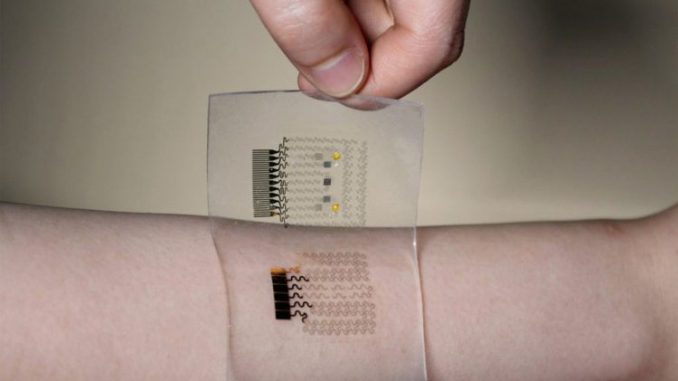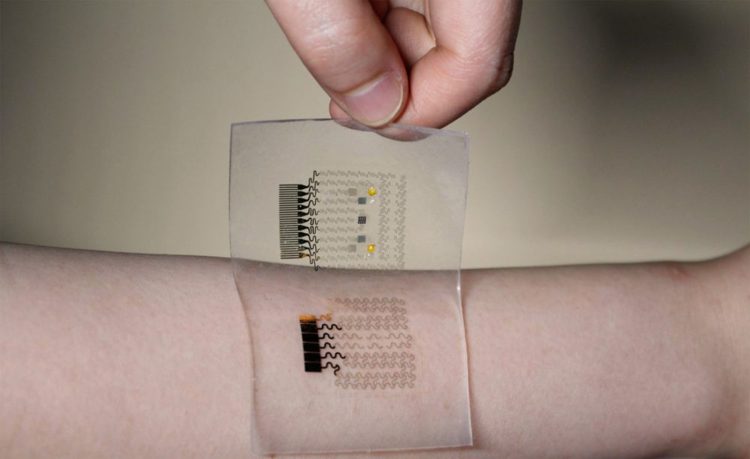
The researchers, Nanshu Lu and Deji Akinwande, from University of Texas, Austin, have developed a health sensor that is bio-integrated and applied to the skin like a temporary “tattoo” to take vitals signs measurements. This graphene tattoo has a small form factor than usual sensors. The graphene tattoo has unique characteristics such as flexibility, that is, its atom-thick structure moves with the skin while the mechanical resilience bears the stretching and compression damage to the tattoo. Its conductive nature makes it a perfect non-invasive method for vital signs monitoring.

The tattoo is developed by placing an atom-thick layer of graphene on a copper sheet followed by graphene coating with a stretchy base layer polymer and copper etching. Further, the sheet is placed on an impermanent dissolvable tattoo paper for the future use. The graphene is designed into electrodes and spiral connections to bridge the gaps between them. The tattoos shape and flexibility builds a close contact with the skin surface and the sensor, which in turn eliminates the use of adhesives.
The graphene tattoo is applied by placing the temporary tattoo paper on the skin with water. The atom-thick circuitry of the sensor is held by the electrostatic forces that is strong enough for adherence and also makes the device take high-quality measurements. The vital signals produced by the heart, brain, muscle, skin temperature change, and hydration levels are measured. The measurement obtained from this small form factor is similar to the one from usual devices.
Thus, the scientists’ development of the bio-integrated technology, that is, the graphene tattoo, is creating a bright future for a more non-invasive and portable vital measuring device.
